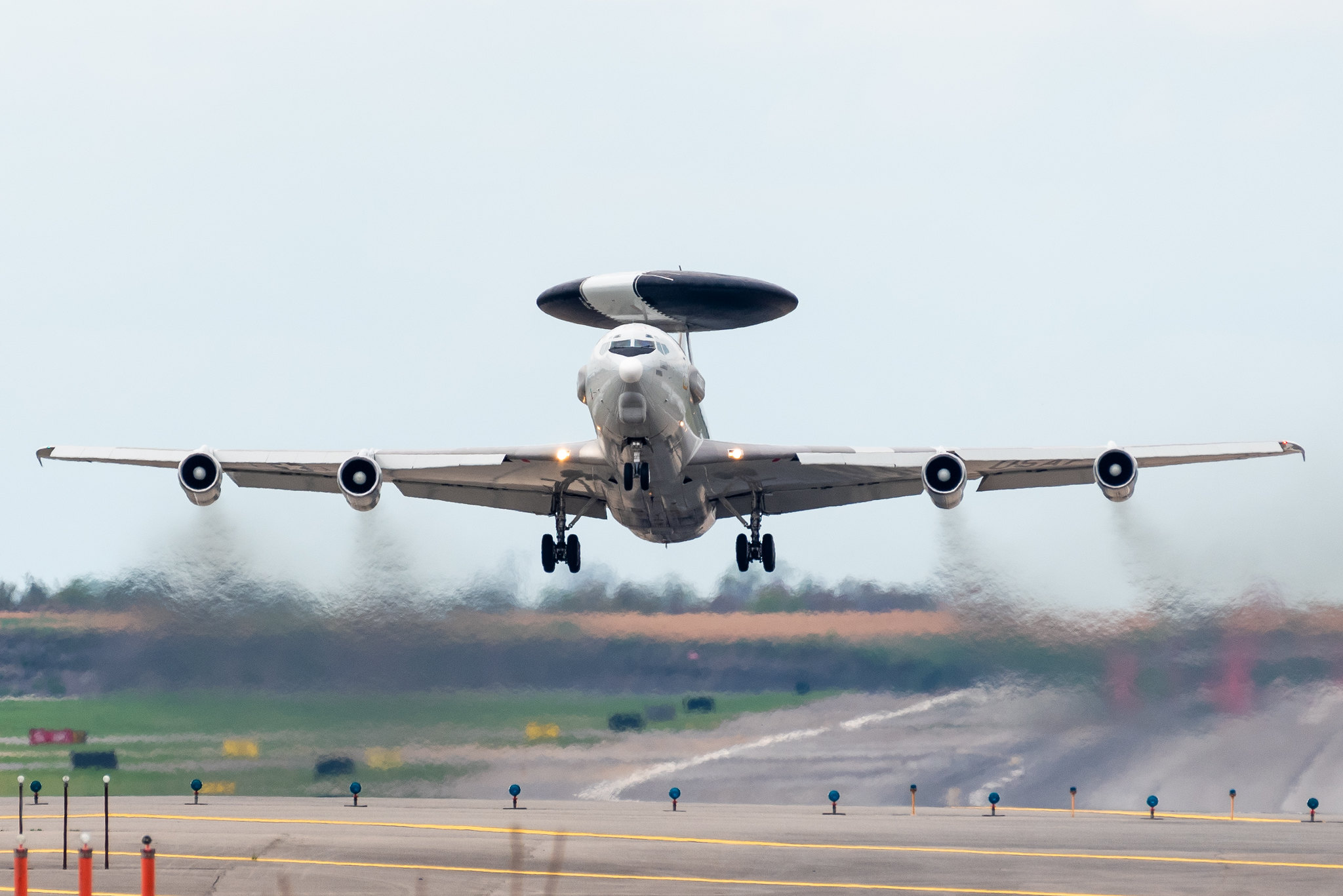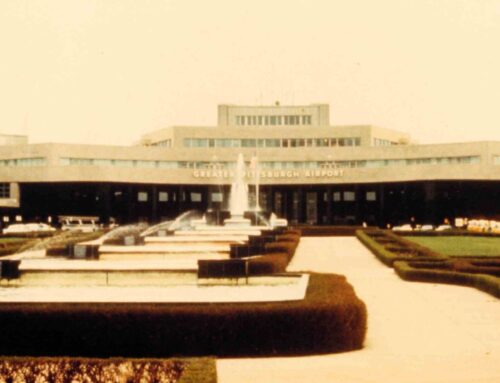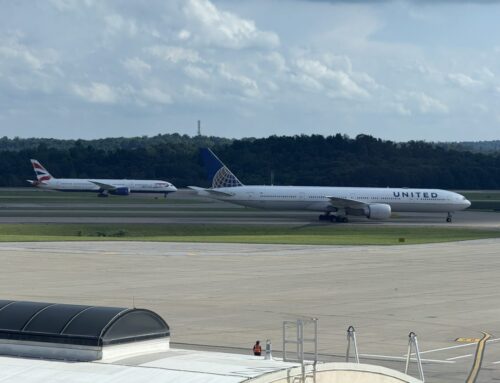Air Force’s Sentry Makes Rare Appearance at PIT
By Evan Dougherty
Published May 1, 2023
Read Time: 3 mins

On April 18, an unusual visitor made an unexpected appearance at Pittsburgh International Airport.
It was a Boeing E-3 Sentry—one of the Air Force’s most highly advanced aircraft, and one of the rarest planes to visit PIT.
With its massive saucer-like radar dome sitting atop the fuselage, the Sentry looks like few other aircraft. Each time the aircraft leaped off the runway, its four Pratt and Whitney engines screamed to life, leaving distinguishable brown smoke trails in its wake and producing a thundering roar as the jet flew overhead.
The Sentry took off from Niagara Falls Air Reserve Station in New York and flew down to PIT to perform what are known as “touch-and-goes,” when a plane lands very briefly before immediately taking off again. Touch-and-goes are a common practice in military aviation for flight crews to build up hours and maintain the skills necessary to fly their aircraft.
After several circuits, the aircraft departed PIT and flew back to Niagara Falls. The aircraft’s home unit is the 552nd Air Control Wing at Tinker Air Force Base near Oklahoma City, indicated by the aircraft’s tail code ‘OK.’
But why visit PIT?
With three long, parallel runways and one crosswind runway, Pittsburgh International can accommodate aircraft of any size. Three of PIT’s four runways are longer than 10,000 feet and at least 150 feet wide, allowing the airport to handle the largest airplanes, commercial or military, that fly in the skies today.
PIT also provides enough space for multiple takeoffs and landings with minimal disruptions to surrounding air traffic.
A ‘flying control tower’
The Boeing E-3 Sentry may have one of the strangest looks of any aircraft in the service’s inventory. However, it is one of the Air Force’s most valuable aircraft and fulfills an important mission.
Known as an airborne warning and control system (AWACS for short), the E-3 is used to collect intelligence from a battlespace by identifying aircraft. It uses surveillance and target detection methods to feed information back to allied forces, including how many potential threats exist and where they are located.
The E-3 is most recognizable by the massive saucer-like radar assembly that sits atop the plane’s fuselage. The apparatus is 30 feet in diameter—about the length of two mid-sized sedans—and six feet thick. Its radar saucer can rotate for a full 360-degree view and can detect and track targets more than 250 miles away, about the distance between Pittsburgh and Philadelphia.
An E-3 will carry a flight crew of four along with up to 19 mission specialists, although this varies depending on the mission. Mission specialists sit inside the plane’s cabin at stations controlling various onboard computers that process intelligence gathered by the aircraft’s systems.
Based on the Boeing 707 passenger jet, the E-3 first entered service with the Air Force in 1977, making it one of the oldest types flying in the service. It is entering the twilight of its career; in March, the Air Force awarded Boeing a $1.2 billion contract for 26 of the newer E-7 Wedgetail, which is based on the 737-700, to replace its aging Sentries. The first E-7 is expected to become fully operational with the Air Force in 2027.
The gradual phaseout of the E-3 has already begun. In April, the Air Force retired its first E-3 from service and plans to retire an additional 12 Sentries in 2023.
The E-3 is also one of the rarest aircraft in the inventory, with just 32 currently in service. Most of the fleet is based at Tinker Air Force Base with the 552nd Air Control Wing while the rest of the fleet is located at bases in Alaska and Japan.







